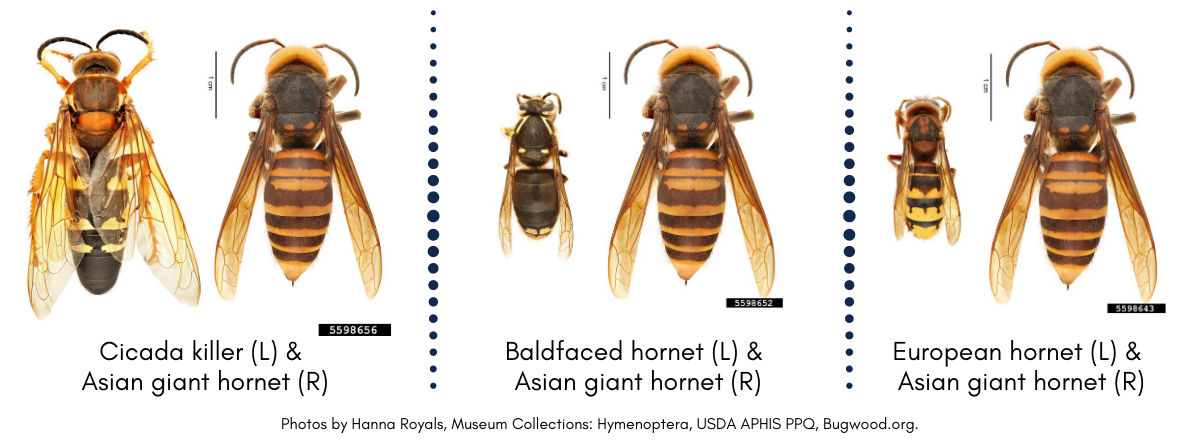Cicada Killer (Not Murder Hornets)
Often mistaken for something more sinister (like murder hornets), cicada killers are considered gentle giants. Their large size and black and yellow markings make them seem alarming, especially as males tend to hover around intruders in their nesting area. Be assured though that the male cicada killer cannot sting, even though they might buzz you. While females can sting and have an intimidating-looking stinger, they don’t have nest guarding instincts, so they tend to fly off instead of defending areas. Their large stinger is used to paralyze cicadas, which they stuff into their ground nests to provide food for their young. Cicada killer adults have diets of pollen and plant materials and therefore are incidental pollinators.
Despite being a beneficial insect, some people would still prefer these wasps weren’t residents of their yards. As they dig their nesting tunnels, they can move quite a bit of dirt around and create issues for lawns and patios. What is the best way to dissuade them from hanging around? Bare, dry, and sandy soil in sunny spots is their preferred nesting habitat so improve conditions to create soil that is moist, add mulch to bare spots, and fill in bare areas with plants.
But wait, how will you tell if you have a Cicada Killer or an Asian Giant Hornet (“murder hornet”)? At first glance, Cicada Killers have broken lines of yellow on their black abdomen and a dull head while Asian Giant Hornets have bands of alternating brown and orange on their abdomen and a large bright orange/yellow head. And you won’t need a second glance because we don’t have Asian Giant Hornets in Kansas. Based on what is known about their current preferred climate conditions (mild and rainy), Asian Giant Hornets aren’t predicted to be able to thrive in our area.
 photo sourced from Illinois Extension
photo sourced from Illinois Extension